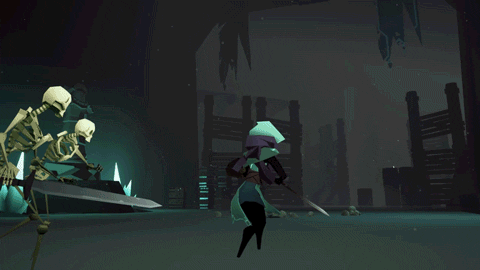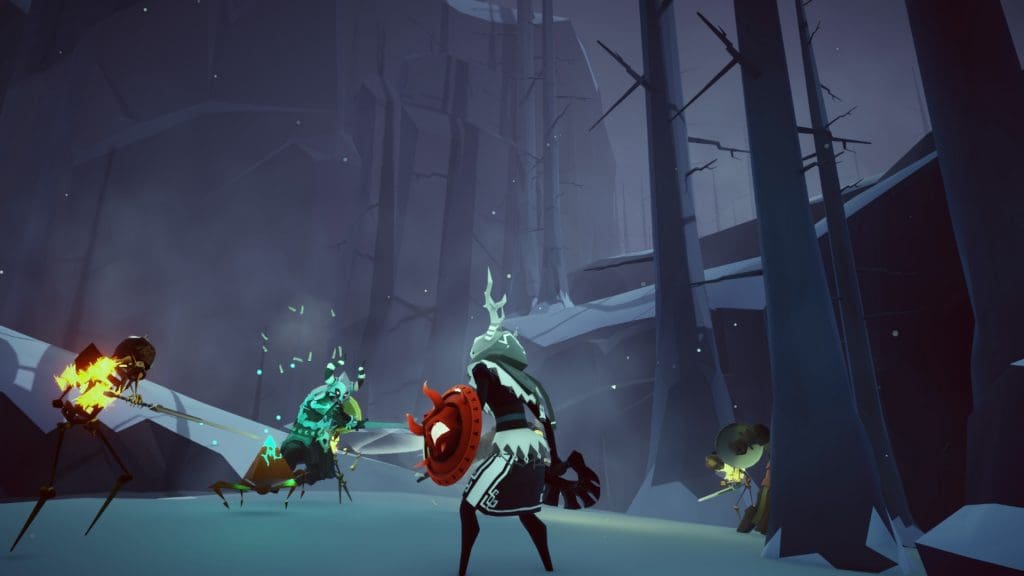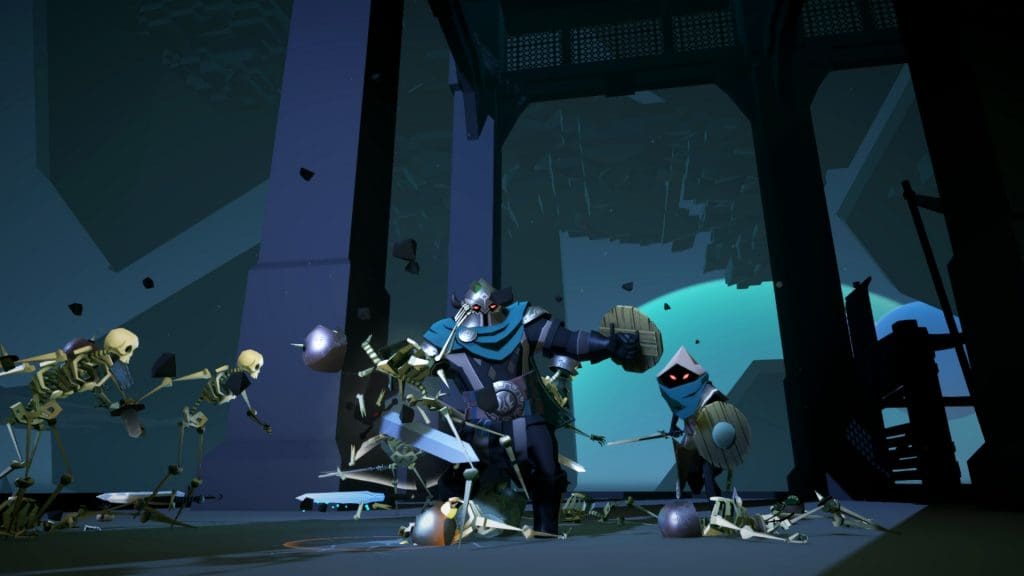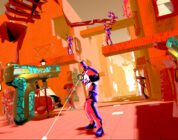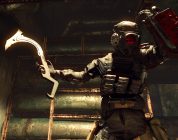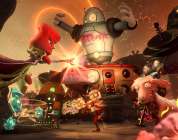The skeleton mob caved my hero’s skull in, ending my adventure on the third, of ten, level of the Necropolis. The time before that, I’d made it to the to the second floor. The time after, my heroine barely made it out the doors of the central starting area before being ambushed by a mob of six. This was Necropolis, Brutal Edition, Harebrained Scheme’s unique procedurally generated third-person dungeon runner.
Drawing difficulty cues from the Dark Souls series, Necropolis differentiates itself with a cel-shaded art style and a world that’s different every time you play. As either a Brute (bigger, slower, seems to absorb more damage) or a Blackguard (smaller, faster, trading durability for speed) you and up to three networked co-op friends descend into the depths of the Necropolis, a huge magical construct created by the ancient wizard Abraxis.
The Necropolis contains the greatest collection of magical items and treasure the world has ever known. It is watched by the Brazen Head, a magical construct that takes the form of a golden pyramid. The corridors move and shift based on the Brazen Head’s whims, and are remade every time an adventurer dies.
Along your journey, the ever-watchful Brazen Head offers “helpful” suggestions, little side jobs it would like you to do for a small reward and occasional reveals into the lore of the world. But mostly it’s the snarkiest golden pyramid thing ever encountered in gaming.
Each time you die, your performance is judged and depending on how well you’ve done, you may receive some Tokens. These and the Codexes you can buy are the only things that can be brought with you from run to run. The Tokens can also be exchanged during a run to unlock a treasure chest on each floor which may give you enough gear to get you through to another level or to unlock colors that provide cosmetic customization choices, but otherwise do nothing.
Speaking of customization, it’s quite limited. Both classes have male and female versions and, at the start of the game, have four different color patterns to choose from. A further twelve await unlocking with Tokens should you choose to spend your hard-fought gains on them.
You’ll be in combat a lot. Unfortunately, this is probably the weakest point of the game. Regardless of the chosen character class, combat control felt slow and unresponsive to me, as though my character had to drag his or her hands through cold molasses just to swing a sword. The target locking option had difficulty prioritizing the correct target when battling waves of enemies, but not locking targets would often find me swinging a sword into thin air while a group of enemies made hero sashimi of my shortly deceased character.
I’m a big fan of the cel-shaded graphics style, and Necropolis executes it well. Various tilesets are visually distinct, and while a lot of the game is dark, there’s no places where the graphics get muddy. Walls, enemies, and various room features remain visually distinct and easy to see.
Unfortunately, while the game does offer up to four-player co-op, the player community, at least on Xbox One, is practically nil. This leaves you battling alone, relying on potions, rotten food, and sheer rage to successfully navigate through all the floors of the Necropolis and claim your share of Abraxis’ treasure. But don’t worry, despite the bones of adventurers who’ve come before you that litter every floor of the Necropolis, this next run is definitely going to lead to victory. Totally.
For Dark Souls fans looking for an alternative dungeon runner that is ever so slightly less difficult, Necropolis is a treat. The Brutal Edition update which came free to all versions of the game added the Brute class, a Black Forest tileset and a variety of additional potions, weapons, and armor that were not in the original game. The game hits great notes for fans of Roguelikes as well, and the constantly shifting corridors offers huge replay value.
Necropolis is available now on Windows PC, Mac OS X, Xbox One, and PS4.

